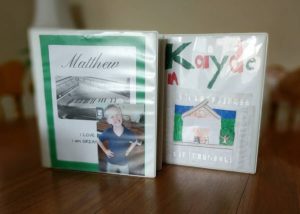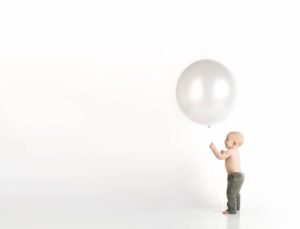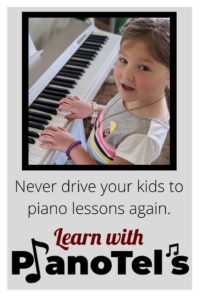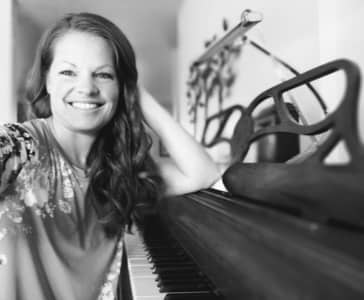As piano teachers, we are working on complete musicianship. We are doing much more than just simply teaching piano just for the sake of teaching piano. That’s why I love my piano student’s binders. If you would like to know more about how I create my piano student’s binders, click here. As you know, the piano cover binder is the absolute most important part of the binder, and really one of the most important things you will help create for your student.
“Habit 2: Begin With The End In Mind. Begin each day, task, or project with a clear vision of your desired direction and destination.” Stephen Covey
This is what the binder cover is for: beginning with the end in mind. Our purpose for this binder cover is to create a clear vision of the desired direction and destination of your student in piano. It will be something that they create, and they will love it.
Every time your student picks up this book, it will be the first thing that he/she sees. Hopefully, you are well-utilizing this binder. Hopefully it becomes an integral part of your lessons. Let’s take a look at what we can do to get this.
Creating a vision
Playing the piano is a brain exercise. It engages both sides of the brain and to make a player successful, we as teachers need to help them use that to their advantage. A lot of success in piano is mental. The kids will become as good as they want to be. No matter how much the parent is willing to shell out in money and no matter how much they force their kids to practice, the student becomes whatever they allow themselves to become. In so doing, we need to give them the reigns to decide their own destiny.
First, the student needs to create the mental picture of what they desire to become. Then, that that goal will come to fruition, especially as we keep those goals in mind.
But, how do we help the students to truly have that vision when it is, after all, just a little abstract? I like to start this exercise by telling the student to write down five words that they could associate with piano that are positive. I have a whole board of descriptive words for them to use to help get some of the creative juices flowing.
These are some descriptive words that were chosen:
 confident
confident- masterful
- practiceful
- pianist
- lovely
- happy
- joyous
- fun
- amazing
- inspiring
- creative
- teacher
- gentle
- upbeat
- comfortable
- courageous
- serious
- wild
- lively
- enthusiastic
- playful
- excellent
- awesome
- good
- funny
Some of the descriptions they chose wouldn’t have been my choice, but that’s the point, right?
Write a statement
Once they have their five words that they chose, then I encourage them to make a statement out of it. The point is to create a belief in themselves that they can reinforce every time it is read. These are some examples from my students:
- I like to practice the piano!
- When I play the piano, I feel happy and encouraged.
- I am excellent at the piano!
- When I play, I help others to feel playful and lively.
- I am creative, inspiring, and masterful at the piano.
Write a mission statement for piano
If I have younger students, I don’t always feel like this part is necessary and I skip over this step and head to the next. But for my older students, I absolutely feel that this is a part of the vision of piano that they should develop. This is the purpose and the “why” behind why they do what they do. I use this to help encourage them to maintain their motivation. It is also helpful for me in tailoring their lessons for what they are truly seeking for. I like to use the “so that I can ___” approach. Here are a couple examples:
- I practice piano so that I can inspire others through my music.
- I am excellent at piano so that I can accompany singers one day.
- I love practicing so that I can be good.
- I excel in practicing the piano so that I can play in a band.
As you can, it doesn’t have to be complicated or ornate. It just has to be personal. Whatever its is that motivates them, that gets them to remember why they are doing what they are doing. We want it written here.
Add an inspiring picture, photo, and/or color
Now you can take a combination of the words, the statement, the mission statement, and a photo or picture of their choice to create a beautiful, personal vision to put in the front of their binder. I let the kids loose on this one. I have a computer with photos that I have pulled up in case they want to use any of those. They design the vision board to be whatever it is that they want it to be and look like. We print out the statements, or some of them choose to write it on their own. The pictures can be printed to add to the page. I have colorful paper to mount it on. They can then put it in their sleeve of their binder. It’s personal. It’s their’s. It’s vision.
I also like to have their names on that page somewhere, somehow. In the end, they have a modge podge of positive words, statements, mission statements, and photos along with their name. It can be arranged in whatever way they like best. Organized or crazy. Simple or ornate. As long as they like it and it represents them.
Now, sometimes your students just aren’t digging this activity. I have to say that most of my students have loved this. Boys or girls, young or old, they “get it” and really do try and make this activity meaningful. But if you are struggling with getting them to engage, there may be more to the picture.
Overcoming negativism
Not all of my students have had good experiences with piano in the past. Maybe they have been “forced” into piano. Maybe they don’t want to be there. Perhaps they have totally bombed a previous recital. Or feel that they don’t play well and therefore are not destined to be good piano players. There are any number of negative, deep-seeded emotions that they may associate with piano. Its important to be able to discover this. If they are struggling, don’t just gloss over this. See it for what it is and help them figure this out!
Releasing negativism
Take a small piece of paper and allow the student to write down anything negative they feel about piano. Do they feel like they can’t play well? Write it down. Do they feel like they can’t perform well? Or that they will never be that great of a piano player? Write it down. Do they feel that piano is boring? Hard? Not for them? Write it all down. If they want to, they can draw their emotions through a picture, or words. No need to make this organized. Just get it out on the paper.
Now, take that piece of paper and attach it to a helium filled balloon. Go outside with the student and let it go. Watch it float away, far away. You can clap and laugh about it, or just simply watch what happens to it as it blows away. Now. You need to explain to the student that every time one of those negative thoughts shows up again, we just let it go. Just like what we did with the balloon activity. That negativism does not exist in their brains anymore. It floats away as soon as is thought of!

Creating a safe environment
Just as the student’s negative thoughts and false beliefs floated away on the balloon, so does all your negative thoughts and beliefs about them as well. Piano lessons are a safe environment where they can be encouraged and given constructive criticism. Remember to keep that safe environment with your students so that there can be a feeling of trust in their music education.
Tel loves her life as a piano player, a piano teacher, and a mom. Amid piano blogging, piano teaching, and piano playing, she loves a chance to fit in a good exercise class, volunteer at her kids’ school and at her church, and go on long dates with her husband. Full bio at About Tel.


